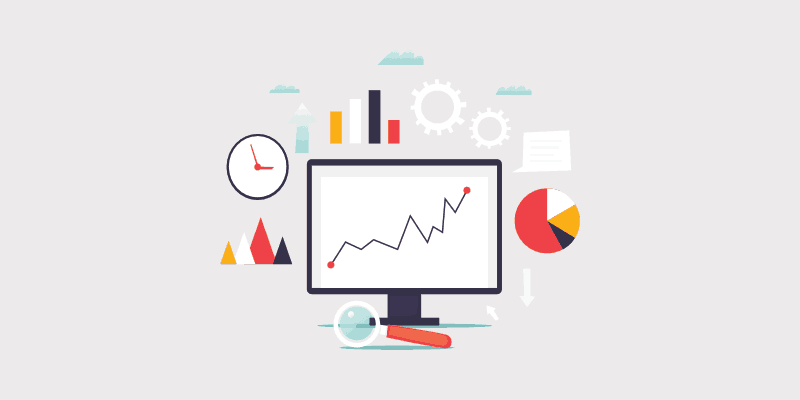We all rely on the news to stay informed and up-to-date on what’s happening in the world. However, have you ever stopped to wonder about the story behind the headlines? The events that led up to a newsworthy moment or how it will impact those involved? In this blog post, we’ll delve deeper into current events and uncover their stories – providing you with a more comprehensive understanding of the news. Join us as we go “Behind the Headlines” and explore what lies beyond just a catchy title.
Introduction to Investigating the News
In today’s society, it’s more important than ever to be able to critically analyze the news and media we consume on a daily basis. With the proliferation of fake news and alternative facts, it’s become increasingly difficult to know what to believe.
That’s why it’s so important to learn how to investigate the news for yourself. By learning how to ask the right questions and do your own research, you can cut through the noise and get to the heart of any story.
In this series of blog posts, we’ll be exploring different aspects of investigating the news. We’ll start by looking at how to identify fake news stories, then move on to tips for conducting your own research. We’ll also touch on some ethical considerations for investigative journalists.
So whether you’re a news junkie or just someone who wants to be better informed, join us as we explore how to investigate the news like a pro!
What Is Behind the Headlines?
In our fast-paced, 24-hour news cycle world, it’s easy to become consumed by the headlines and lose sight of the stories behind them. But understanding the background and context of a story is crucial to being an informed citizen.
That’s why, at Behind the Headlines, we strive to provide in-depth analysis and commentary on the top stories making headlines. We go beyond simply regurgitating the day’s news and instead provide readers with thoughtful insights and perspectives that help them make sense of what’s going on in the world.
Our team of experienced journalists and commentators are experts in their respective fields, whether it be politics, business, sports, or entertainment. And they’re committed to providing readers with an honest and unbiased look at the stories making headlines.
So if you’re looking for more than just the headline, come check us out at Behind the Headlines. We promise you won’t be disappointed.
Identifying Bias in News Sources
In order to identify bias in news sources, it is important to first understand what bias is. Bias can be defined as a personal or group preference for one particular thing over another. When it comes to news sources, bias can manifest itself in many different ways. It could be something as overt as a news source only reporting on stories that support their political point of view. Or, it could be something more subtle, like a news source using language that subtly casts certain groups of people in a negative light.
There are a few key things to look out for when trying to identify bias in news sources. First, pay attention to the language that is used. If a news source consistently uses loaded or pejorative language when referring to certain groups of people, that is an indication of bias. Second, look at the stories that are being covered. If a news source seems to only report on stories that support their point of view, while ignoring or downplaying stories that don’t fit with their narrative, that is another sign of bias. Finally, pay attention to the sources that are being used. If a news source only relies on sources that support their point of view, while ignoring or dismissing those that don’t, that is yet another indication of bias.
If you suspect that a particular news source may be biased, it’s important to do some further research before drawing any conclusions. Try reading or watching coverage from other news sources on the same story. See if they are
Researching and Verifying Facts
The internet has a wealth of information, but not all of it is reliable. When researching a story, it’s important to verify the facts before publishing anything.
There are a few ways to do this:
1. Check multiple sources. Don’t just rely on one source for your information. Look at different websites, books, and articles to get a well-rounded view of the story.
2. See if the source is reputable. Make sure you’re getting your information from a reliable source. If you’re unsure, look for reviews or see if other people have cited the source in their own work.
3. Contact the experts. If you’re still unsure about something, reach out to an expert in the field and ask them for their opinion. They’ll be able to set you straight and help you verify any facts that you’re unsure about.
Connecting the Dots: Making Sense of Complex Situations
The news is full of stories that can be hard to follow. They often involve many different people, events, and ideas, making them seem confusing and overwhelming. But there are ways to make sense of complex situations. By taking the time to understand the history and context of a story, you can start to see the connections between different elements. This can help you make sense of what’s going on and why it matters.
When you’re trying to understand a complex situation, it can be helpful to:
Find a timeline or overview of the events leading up to the situation. This can help you see how different elements are connected and how they have unfolded over time.
Look for experts who can provide context and analysis. These sources can help you better understand the implications of what’s happening.
Read beyond the headlines. The headline of a story is often designed to grab attention, but it doesn’t always give the full picture. By reading the whole story, you can get a more complete understanding of what’s going on.
Asking questions can also be helpful when you’re trying to make sense of a complex situation. When you come across something that doesn’t make sense, take note of it and see if you can find an answer. Asking “why?” can be especially useful in uncovering hidden layers of meaning in a story.
By taking the time to
Questions To Ask When Analyzing a Story
1. What is the problem or question that the story is trying to answer?
2. Who are the main characters involved in the story, and what motivates them?
3. What are the possible outcomes of the story?
4. What supporting evidence does the story include?
5. How might different readers interpret the story differently?
Managing Emotions When Reading News Stories
It’s no secret that the news can be depressing. Stories of natural disasters, mass shootings, and political turmoil can trigger strong emotions in even the most even-keeled person. So how do you manage your emotions when reading news stories?
Here are a few tips:
1. Don’t read the news first thing in the morning. If you start your day by reading about all the bad things happening in the world, you’re likely to set a negative tone for the rest of the day. Instead, try reading the news later in the day or evening, after you’ve had time to wake up and get going.
2. Take breaks from reading the news. It’s important to stay informed, but it’s also important to take care of your mental health. If you find yourself getting too caught up in the negative stories, take a break and do something else for a while. Go for a walk, read a book, or call a friend.
3. Be mindful of your personal triggers. We all have different things that can trigger strong emotions. If you know that certain topics or types of stories tend to upset you, try to avoid them if possible. And if you do end up reading something that upsets you, take some time to process those feelings before moving on.
4. Seek out positive stories as well. It’s easy to get caught up in all the negativity, but it’s important to remember that there is still good
Conclusion
As the news media continues to become more and more biased, it is important for us to take the time to uncover the hidden stories behind what we read in the headlines. We must be critical of our sources, dig deeper into those stories, and look beyond just what is being reported. By doing so we can gain a better understanding of our world and make sure that we are getting accurate information about events that shape our lives.



